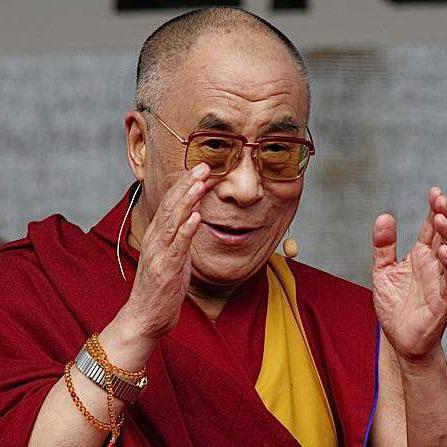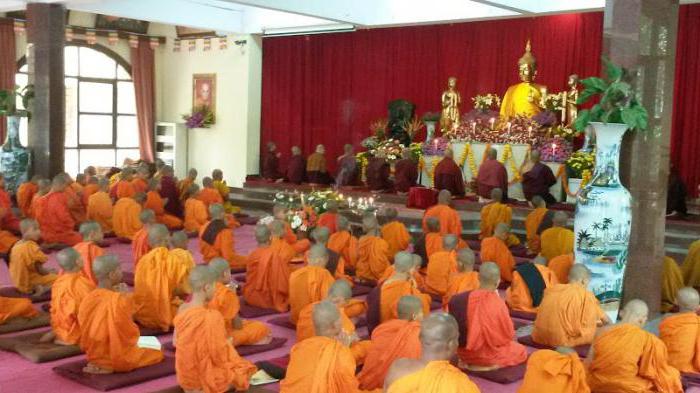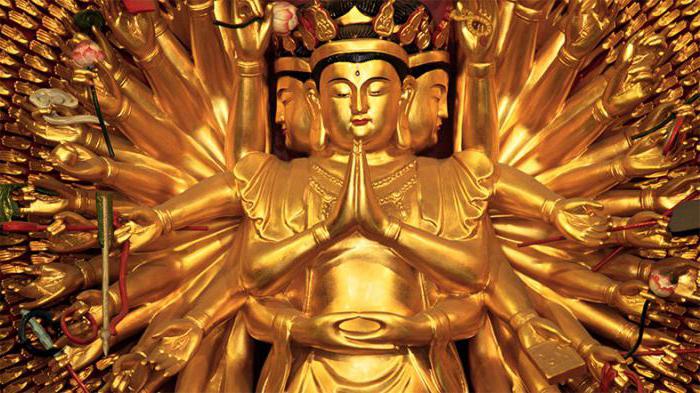Mahayana is one of the main schools of Buddhism, which in the modern world unites more than one hundred and fifty million people and is one of the most humane religions in the world. It attracts people of different nationalities and outlooks on life with the opportunity to improve themselves and achieve a more complete and informed life.
World religions
Religions that are common in most countries of the world are commonly called world religions. They do not have a clear national or territorial affiliation, they are professed by the vast majority of people on the planet. Traditionally, Christianity, Islam and Buddhism are classified as world religions. Hinduism, Judaism and Confucianism are also accepted as world ones. These religions cover large territories of influence. At the same time, Hinduism has common roots with Buddhism, and in Christianity, early Christianity originates. The oldest of the three main religions is Buddhism, which arose in the middle of the first millennium BC in ancient India. Today, more than four hundred million people around the world profess Buddhism. Most Buddhists live in South Asia. This ancient religion is especially common in Japan, China, Mongolia, Vietnam, Thailand, Cambodia and Korea. In Russia, it is mainly Tuva, Kalmykia and Buryatia.
History reference
In ancient India, for a long time, the leading religion was Brahmanism, which later gave rise to Hinduism and Buddhism. Brahmanism was characterized by a large pantheon and a multi-stage hierarchy of deities, very complex and intricate rituals and practices of sacrifice. He also suggested a strict division of society into various castes (estates). Belonging to a higher or lower caste from birth determined the whole life of a person. All the main provisions of Brahmanism found development in Hinduism.

Buddhism also originates in classical brahmanism. But Buddhism denies caste, inequality, sacrifice and supreme gods. The founder of the new religion was Prince Siddhartha Gautama, who later received the name Buddha Sakyamuni (awakened). This is a real historical character, about which quite detailed information has been preserved. Gautama came from the royal family. Living in a palace in luxury, he never encountered the real world. Only at the age of thirty did he accidentally see an old man, a patient, and a funeral procession on the street: old age, illness, and death. This event turned the life of the prince upside down. He left home, family, wealth and went on an endless journey around the world. Gautama tried to understand the causes of injustice and evil in the world, he looked for sources of happiness and salvation. In the end, he came to an enlightened realization that the earthly life of man is continuous suffering. Happiness and peace can only be found in a state of nirvana, abandoning everything earthly. Buddha Gautama lived a long life and in more than forty years of wandering gained many supporters and followers of his teachings. They say that his first associates were representatives of the lower caste of the untouchables, whom the teachings of Shakyamuni made it possible to change their lives. After his death, the disciples continued the work of their spiritual leader.
The teachings of Buddhism and its difference from other religions
The teachings of Buddha are called by Dharma followers. The fundamental feature of dharma is its undivine origin. Buddha himself claimed that understanding of the right path came to him from many days of observing the state of his own spirit and the world around him.
The teachings of Buddhism say that everyone through meditation, a good attitude towards the world, a conscious rejection of worldly goods can come to an ideal and serene state of mind (nirvana). Distinctive features of this ancient religion are:
- lack of a single deity and worship of gods,
- many areas and schools of Buddhism that coexist peacefully within the same religion,
- loyalty to other religions, beliefs and gods.
It is important that Buddhism is not only a religious teaching, but also a developed system of philosophy, worldview, medicine, art and culture. Buddhism is a way of life, a special relation to the world, eternity and self.
Buddhism in India
Originating in India, the ancient religion for two and a half thousand years of existence has gone through several stages of development: formation, flowering, crowding out, returning. The teachings of the Buddha Shakyamuni for several centuries has reached unprecedented popularity and recognition. Buddhism was even proclaimed the state religion of India during the reign of King Ashoka. Thanks to the support of the rulers of India, Buddhism reached its peak in the ninth century. After the arrival of Islam in the country, Buddhism began to rapidly lose ground, and by the thirteenth century it was completely ousted from the country.

The return of Buddhism to its historical homeland occurred only in the middle of the twentieth century, but with a different people. The accession of Tibet to China provoked a large wave of emigration of the indigenous people of Tibet to India. So Buddhism returned to India along with the large Tibetan diaspora. In modern India, Buddhism is maintained at the state level as part of the country's history. In India, many Buddhist historical monuments and holy places have been preserved, to which the followers of the Buddha constantly make pilgrimages. There are very few Buddhists among the indigenous population of India; Hinduism remains the main religion of this country. Thus, Buddhism that arose in India was subsequently driven out of this country, but was widely recognized in other countries and became the largest world religion.
Opponents of Buddhism
Buddhism has been repeatedly criticized by various social movements and other religions. So, atheists criticize Buddhism for the philosophy of abandoning the struggle and a passive attitude towards technical and social progress.
Christians and Muslims condemn Buddhism for denying one God. For example, Catholics consider the ancient religion too self-centered. Buddhism is criticized even by feminists for violating the rights of women, although this is not at all the case. Within Buddhism itself, there is also no unity in views and principles. Therefore, Buddhism is divided into many areas and schools that coexist relatively peacefully within the framework of one world religion.
Different trends in Buddhism
Buddhism, like no other religion, includes an incredible number of schools and schools. This was facilitated by several objective features of religion:
- tolerance of other beliefs, traditions and customs,
- the absence of the supreme god
- lack of a single territorial center of Buddhism,
- different interpretations of the teachings of Buddha,
- national and cultural characteristics of the territories of the spread of Buddhism.
For example, there is Tibetan, Japanese, and Chinese Buddhism.
Among this set, three main areas of Buddhism stand out: Hinayana (Theravada), Mahayana, Vajrayana.
Hinayana
Hinayana (Lesser Chariot) - the path of liberation from the suffering of the material world only for yourself. According to this path, a person can reach the state of an arhat (get out of a series of incarnations in the material world) only as a monk. At the same time, only his own path should bother him. Hinayana has strict vows and restrictions that are not available to the laity.
Therefore, Hinayana is a closed school of Buddhist monks, engaged exclusively in their own enlightenment and not leading missionary activities. This closeness is the main difference between Hinayana and Mahayana.
Mahayana
Mahayana (The Great Chariot) - the path to enlightenment for the benefit of other people. The goal of a believer in the Mahayana is to achieve the state of a Bodhisattva (enlightened person) in order to help other people in getting rid of suffering. Mahayana is the absolute pursuit of good. It directs the Buddhist to study the Buddha’s heritage, to meditate and do good deeds for the sake of others.
Vajrayana
Vajrayana (Diamond Chariot) - Tantric Buddhism, based on special practices - tantras. The goal of the Vajrayana is to achieve enlightenment for the sake of other beings, an enlightened life in samsara (the circle of reincarnation). Unlike Vajrayana, the basis of Hinayana and Mahayana are sutras.
Mahayana - the largest school of Buddhism
Mahayana is the most popular destination in Buddhism. Mahayana is common in China, Mongolia, Japan, Tibet, Korea. In a world of over one hundred and fifty million people, they practice the Mahayana.
Unlike the closed Hinayana, the followers of the Mahayana believe that they return to the roots and reveal the secrets of the teachings of the Buddha to all people. They believe that any person can achieve the enlightened state of Buddha, provided that the right path is chosen. The Mahayana recognizes the divine nature of the Buddha and believes that he is present invisibly in all life on earth. In Mahayana Buddhism, there is a theory of the three bodies of the Buddha:
- acquired body - incarnation in the human body,
- the body of bliss is an incarnation in a deity,
- the body of the Law is the authentic Buddha, the absolute.
Followers of the Mahayana claim that the state of nirvana is the cosmic body of the Buddha. And since the Buddha is a part of all living things, a person can also achieve such a state. The main postulates of the Mahayana are reflected in special treatises - "The Sutras of the Lotus of the Good Law", "Visions of the Pure Land", "Perfect Wisdom".
Mahayana is, in turn, a multitude of schools, for example, madhyamika or yogachara. Their creators are famous and recognized Buddhist teachers and preachers. So, in Tibetan Buddhism there are five main schools: Kadam, Sakya, Nyingma, Kagyu and Mahayana Gelug.
Buddhist monasteries and temples
The centuries-old traditions of Buddhism have left their mark not only in philosophy, culture, art, medicine, but also in architecture. Buddhist monasteries and temples are unique architectural monuments that annually attract pilgrims and tourists from all over the world. For example, the most beautiful Buddhist complex Potal is located in Tibet. It is located in the mountains at an altitude of about four thousand meters. The complex includes two grand palaces: Red and White. Before the accession of Tibet to China, the Dalai Lama's winter residence was located here.

In Burma, in Yangon there is an unusual Buddhist pagoda Shvedagon. She is famous for using precious metals and gems in her jewelry: gold, rubies, emeralds, sapphires. In the Indonesian jungle is the largest ancient Buddhist temple, built in the form of a mandala and decorated with Buddha statues. An amazing temple located in Thailand. It is called Wat Rong Kum and is built from alabaster and mirrors. The unusual architecture of the temple is amazing. In Bhutan you can admire the “Tiger Nest” - a Buddhist monastery located high in the mountains, on a rock, which is very difficult to reach.
Due to the wide spread of Buddhism in the world, architectural monuments of the ancient religion can be found in almost any part of the world. They are always distinguished by monumentality, grandeur and rich design.
Mahayana Buddhism in the modern world
Buddhism has become so widespread in the world due in large part to its loyalty to other beliefs and peacefulness. This is the only world religion that did not wage religious wars for the capture of new territories and peoples. Numerous movements and schools of Buddhism manage to resolve disputes and disagreements peacefully through discussions and scientific disputes. Mahayana as the most popular school of Buddhism and today attracts many people.
Mahayana is one of the most humane religions, recognizing the equality of all people, calling for tolerance, self-knowledge and self-improvement.